INTRODUCTION
- Eukaryotic cells are those cells which possess an organised nucleus with a nuclear envelop.
- Some of the important characteristics of eukaryotic cells cytoskeletal structure, membrane-bound organelles and organisation of genetic material into chromosomes.
- These cells occur in protista, fungi, plants and animals.
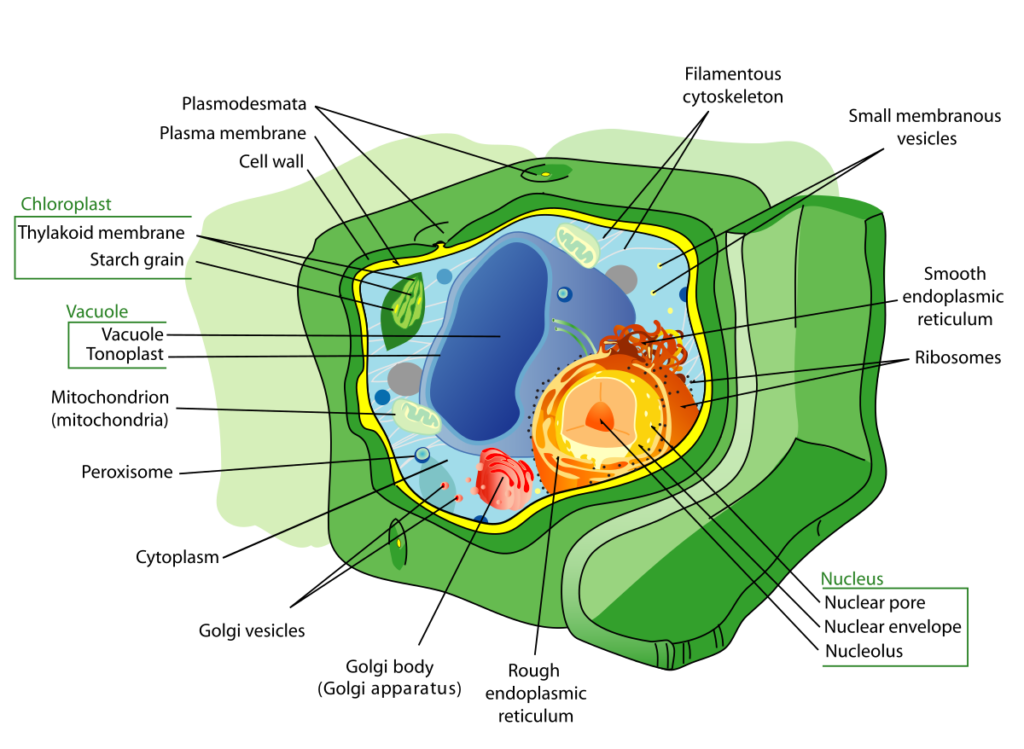
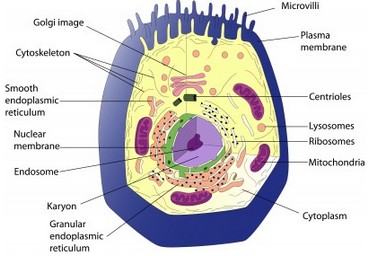
DIFFERENCES BETWEEN PLANT
CELL AND ANIMAL CELL
PLANT CELL ANIMAL CELL
1. Plant cells are generally larger 1. Animal cells are generally small in size.
than animal cells.
2. Plasma membrane of plant 2. Cell wall is absent. The outermost
cells is surrounded by a rigid covering of the animal cell is plasma
cell wall made up of cellulose. membrane.
3. Plastids are present. 3. Plastids are absent.
4. Most mature plant cells have 4. Vacuoles in animal cells are many, small
a permanent and large central and temporary.
sap vacuole.
5. Plant cells have many simpler 5. Animal cells have a single highly complex
units of Golgi apparatus, called and prominent Golgi apparatus.
dictyosomes.
6. Almost all plant cells lack 6. Animal cells have centrosome and
centrosome and centricles. centrioles.
PLASMA MEMBRANE
- Plasma membrane is an absolute requirement for all living organisms as it is responsible for relationship of a cell with the outside world.
- The detailed structure of the membrane was studied only after the invention of electron microscope in the 1950s.
- Meanwhile, chemical studies on the cell membrane enabled the scientists to deduce the possible structure of the plasma membrane.
- The chemical studies done especially on the human red blood cells (RBCs), enabled the scientists to deduce the possible structure of plasma membrane.
- On the basis of these studies, scientists found that the cell membrane is composed of lipids that are arranged in a bilayer.
- These lipids are arranged within the membrane with the polar head towards the outer sides and the hydrophobic (non-polar) tails towards the inner sides.
- The polar ends (head) interact with water and are called hydrophilic.
- This ensures that the non-polar tail of saturated hydrocarbons or hydrophobic tail is protected from the aqueous environment.
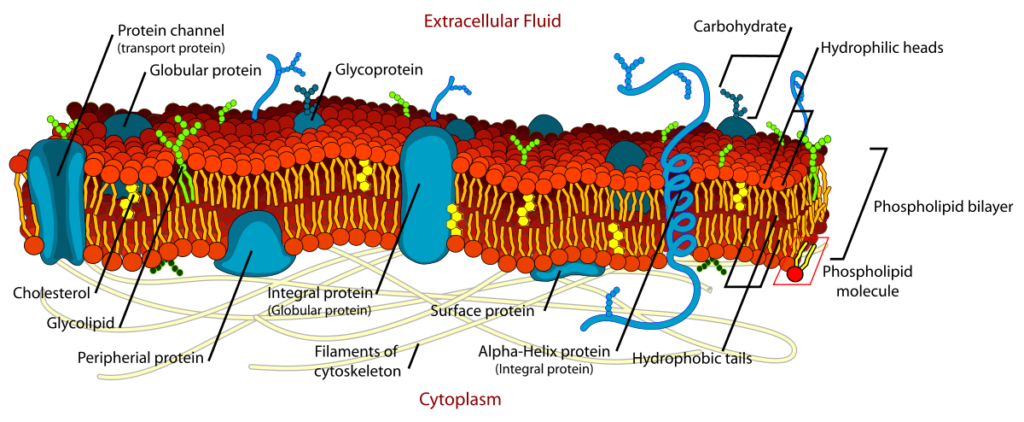
CELL MEMBRANE
- Biochemical investigation clearly revealed that the cell membranes also possess protein and carbohydrate.
- The ratio of protein and lipid varies considerably in different cell types. In human beings, the membrane of the erythrocyte (RBC) has approximately 52 percent protein and 40 percent lipids.
- Depending on the case of extraction, membrane proteins can be classified as integral or peripheral.
- The peripheral proteins lie on the surface of the membrane while the integral proteins are known as tunnel proteins (Trans membrane proteins).
- These proteins cannot be removed easily and their removal requires crude methods of treatment like detergents.
- Thus, the membrane has been described as protein icebergs floating in sea of phospholipids.
- An improved model of the structure of cell membrane was proposed by Singer and Nicolson (1972) widely accepted as Fluid Mosaic Model
- According to this, the quasi- fluid nature of lipids enables lateral movement of proteins within the overall bilayer. This ability to move within the membrane is measured as its fluidity.
- Lipids show flip-flop movement . Proteins due to their large size connot show flip-flop movement.
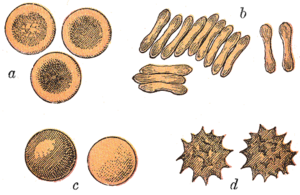
FUNCTIONS OF EUKARYOTIC CELLS
- The fluid nature of the membrane is important from the point of view of functions like cell growth, formation of intercellular junctions, endocytosis, cell division etc.
- Plasma membrane allows the transport of the molecules across it. The membrane is selectively permeable to some molecules present on either side of it. The passage of substances across cell membrane occurs by various methods such as passive transport, active transport.
(i) Passive transport:- Neutral solutes may move across the membrane by the process of simple diffusion along the concentration gradient ie. from higher concentration to the lower without any requirement of energy.
Polar molecules cannot pass through the non-polar lipid bilayer, they require a carrier protein of the membrane to facilitate their transport across the membrane
(ii) Active transport:- It is an uphill movement of materials across the membrane where the solute particles move against their concentration gradient i.e from their lower to higher concentration. Such a transport requires energy. For example, Na+/K+ pump in animal cells.
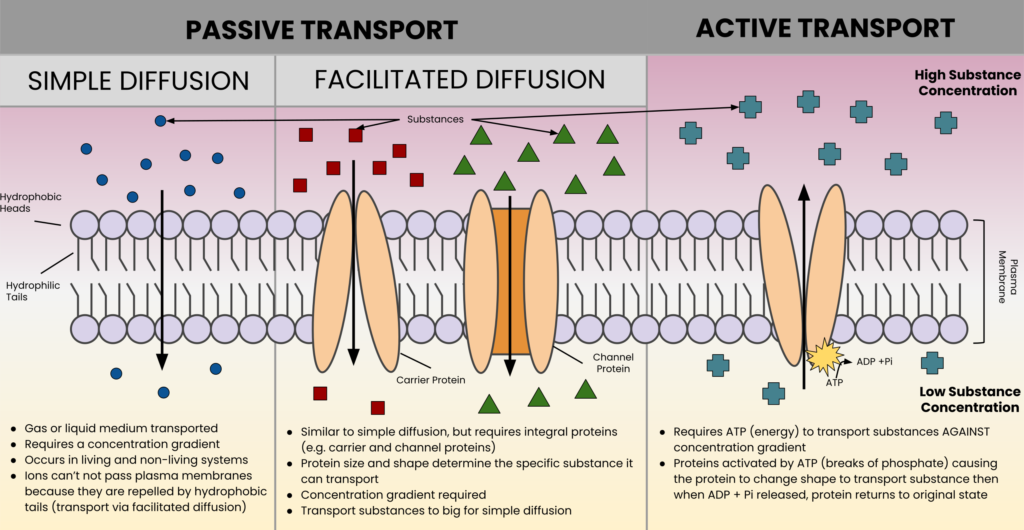
FUNFACTS:-
Ancient Ancestors: Eukaryotic cells are believed to have evolved from a symbiotic relationship between prokaryotic cells, specifically bacteria and archaea. This theory, known as endosymbiosis, suggests that mitochondria and chloroplasts, organelles found in eukaryotic cells, were once free-living prokaryotes that were engulfed by ancestral eukaryotic cells.
Genomic Complexity: Eukaryotic cells possess a complex genome housed within a membrane-bound nucleus. This nucleus not only protects the genetic material but also provides a regulated environment for gene expression, allowing for sophisticated control over cellular processes.
Dynamic Structures: Eukaryotic cells contain a diverse array of membrane-bound organelles, each with specialized functions. From the powerhouse of the cell, the mitochondria, to the intricate network of the endoplasmic reticulum and the packaging center of the Golgi apparatus, these organelles work in harmony to maintain cellular function.
Cytoskeletal Marvels: Eukaryotic cells boast a dynamic cytoskeleton, composed of microfilaments, microtubules, and intermediate filaments. This intricate network provides structural support, facilitates intracellular transport, and enables cell movement through processes such as amoeboid motion and ciliary beating.
Cellular Communication: Eukaryotic cells communicate with each other through a variety of signaling mechanisms, including direct cell-cell contact and the secretion of signaling molecules. These communication pathways are essential for coordinating complex multicellular processes such as development, immune response, and tissue repair.
Epigenetic Regulation: Eukaryotic cells employ epigenetic mechanisms to control gene expression without altering the underlying DNA sequence. These modifications, such as DNA methylation and histone acetylation, play critical roles in developmental processes, cell differentiation, and disease.
Endless Diversity: Eukaryotic cells exhibit remarkable diversity in form and function, ranging from the specialized neurons of the brain to the contractile muscle cells of the heart. This cellular diversity underpins the complexity of multicellular organisms and enables the exquisite organization and function of tissues and organs.
Evolutionary Innovation: Eukaryotic cells have undergone significant evolutionary innovations, including the development of sexual reproduction, which promotes genetic diversity and adaptation. Additionally, the emergence of multicellularity has led to the evolution of complex organisms with diverse ecological roles and lifestyles.
Medical Marvels: Eukaryotic cells are the focus of extensive research in biomedicine and biotechnology. From understanding the molecular basis of diseases to developing novel therapies and treatments, eukaryotic cell biology holds immense promise for advancing human health and well-being.
Environmental Impact: Eukaryotic cells play crucial roles in various ecological processes, from oxygen production by photosynthetic algae and plants to nutrient cycling by decomposers such as fungi. Understanding eukaryotic cell biology is essential for preserving biodiversity and maintaining the health of ecosystems worldwide.
FAQs:-
- Eukaryotic cells are distinguished by their membrane-bound nucleus and organelles, whereas prokaryotic cells lack these internal compartments. This fundamental difference in cellular organization contributes to the complexity and versatility of eukaryotic cells.
- Eukaryotic cells exhibit a wide range of shapes and sizes, reflecting their specialized functions and environmental adaptations. Factors such as cytoskeletal elements, cell-cell interactions, and extracellular matrix components play crucial roles in shaping and maintaining cell morphology.
- Eukaryotic cells participate in a wide range of symbiotic relationships, including mutualistic interactions with other organisms. Examples include lichen, formed by the symbiotic association between fungi and algae, and coral reefs, where corals and photosynthetic algae live in mutualistic harmony.
- Eukaryotic cells collaborate and communicate with one another to form tissues, organs, and ultimately, multicellular organisms. Cell-cell adhesion molecules, intercellular signaling pathways, and extracellular matrix components play critical roles in coordinating these complex processes.
- Eukaryotic cells are central to human health and disease, serving as targets for therapeutic interventions and sources of regenerative potential. Understanding the molecular mechanisms underlying cellular processes can lead to the development of novel treatments for a wide range of conditions, from cancer to neurodegenerative diseases.